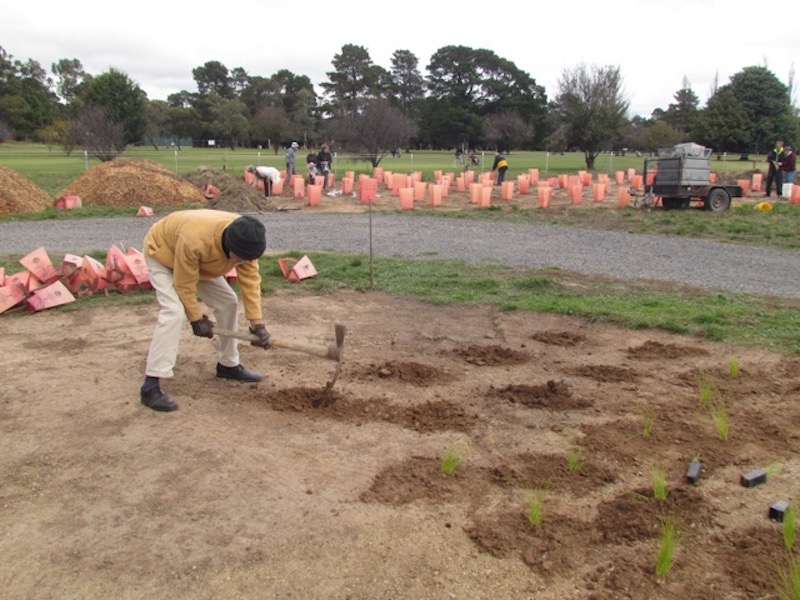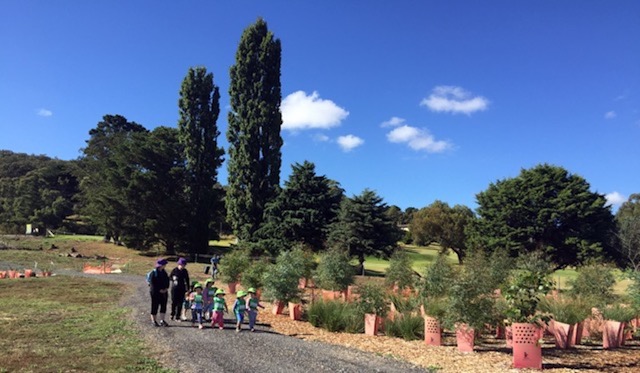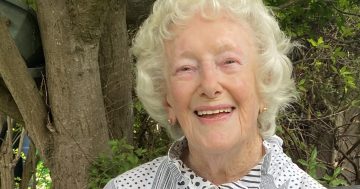
Volunteers lay turf and plant new native species at the Goulburn Wetlands. Photos: Supplied.
Turning a rubbish-strewn old brick pit into a bird and frog-rich wetland has changed more than the landscape in Goulburn.
Entrenched opposition to green causes is subsiding too, like the unsightly boxthorn clumps that once peppered the scoured-out land near the golf course that today is Goulburn Wetlands. To what extent respect for the natural environment has grown in Goulburn will be tested as the historic city develops, and wildlife supporters work to protect rare birds that once hardly rated a mention.
Ornithologist Frank Antram, formerly of Canberra where he worked for the Department of Environment, and now a Goulburn resident, has identified more than 100 species at the wetland, and even more at the old sewage ponds north of the city near the Wollondilly River. These include hundreds of endangered Blue-billed and Freckled duck, Pink-eared duck, Pacific Black duck and Hardhead ducks.

Working on the wetland has even created stronger community sentiment.
Now Frank is Goulburn Field Naturalists Society president, and along with like-minded people hopes Goulburn Mulwaree Council retains the old ponds as a wildlife reserve because the birds drawn there are likely to be regionally significant.
“The council has many interests to fulfil, a reserve for just birds could be hard,” he says.
Since visionaries like the late Peter Mowle and The Goulburn Group created the wetland, a community with many people who would rather shoot than protect a duck is gradually tuning into sustainability. A fourth-generation fat lamb and cattle farmer Ray Shiel recalls the shift in sentiment surfacing at the wetlands, from where it has rippled into the wider community.
“The second or third morning tea, I remember it well, people started to relax and talk among themselves. We stopped mid-morning, we didn’t go back to work that morning, we went through to mid-day,” says Ray.
Now president of Friends and Residents of Goulburn Swamps, Ray says community attitudes are crucial to developing the wetlands and similar wildlife refuges. Morning tea and socialising begin routinely at Wednesday when the smell of steaming tea, fresh cakes and scones mix with the earthy aromas of eucalyptus and upturned dirt at the wetlands.

School children are frequent visitors.
Another volunteer, field naturalist Bill Wilkes says people like himself love the wetlands. As do residents surrounding the oasis on the Mulwaree chain of ponds, who have seen their property prices rise as an ugly eyesore becomes a reedy, leafy bird haven.
“When you are there working, to see so many people enjoying the wetlands, walking their dogs, or riding their bikes, it’s great,” Bill says. “You feel honoured when so many people turn up to work tirelessly and cheerfully each Wednesday, weeding, planting, placing guards on trees, then going home feeling they’ve done something.’’
Volunteers are planning a shade shelter for visitors in wheelchairs. They stabilise paths, keep on top of mowing and fumigate rabbit burrows.
They heap heavy woodchips among fast-growing trees and shrubs, while native Lomandra and Dianella grasses they’ve planted spread, giving invasive African lovegrass and Chilean needle grass fewer places to take hold.
The Goulburn Group’s governance and foundation work has become a much-studied model for success.
Among benefits of a new $30 million wastewater treatment plant will be recycled water for the wetlands, and parks and sports ovals. Birders like Frank Antram say not much water is needed in dry times.
“We may get a spring migration of waders from Siberia stop and have a feed. It always amazes me how boggy ground will attract birds, it’s as if they are circling and waiting to drop in,” he says.
Original Article published by John Thistleton on The RiotACT.









